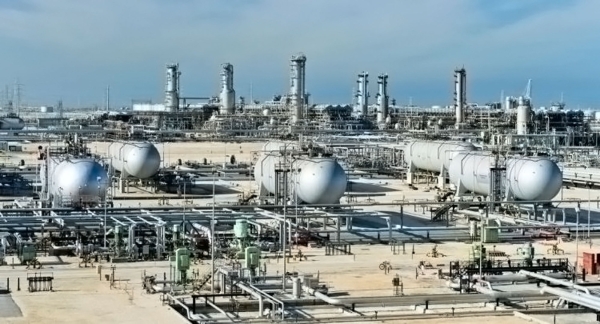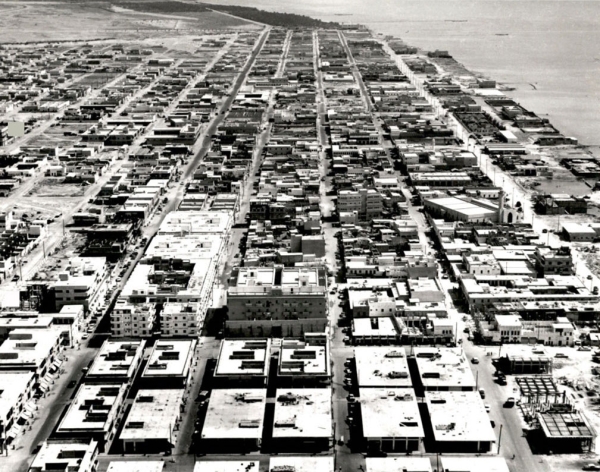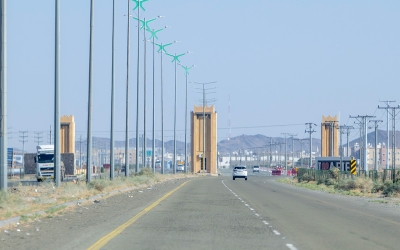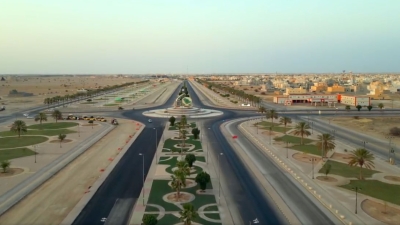

Buqayq City (Buqayq) is the center of Buqayq Governorate, located in the Eastern Province of the Kingdom of Saudi Arabia. Previously known as "Ba'lat Aba al-Qa'dan," the city was renamed after the discovery of oil in the region. The name is derived from the "Baqqa" area, north of present-day Buqayq, which is a water source known for its bubbling springs. The name is reflected in the Arabic word 'Baqqa' meaning 'bubbled.' Buqayq is located seventy-five km south of Dammam and lies midway between Dammam and al-Ahsa.
Population of Buqayq City
As the center of the governorate, Buqayq City is experiencing rapid urban growth. According to the Saudi Census 2022, the population of Buqayq Governorate and its affiliated villages and hamlets is about 64,632 people. This growth is driven by the active oil industry in the area, along with a cement plant, a brick factory, and a lime plant. Additionally, Sabkhat Ras al-Qarya power generation plant is located within its vicinity.
Buqayq City is home to the world's largest crude oil facility and the Buqayq Oil Field, which played a pivotal role in the growth of Saudi Aramco in the early years following World War II. Until 1950, the company extracted oil from three fields: Dammam, al-Qatif, and Buqayq.
The story of oil discovery in Buqayq
The discovery and subsequent development of oil in Buqayq City can be traced back to the efforts of chief geologist Max Steineke. In 1940, Steineke led teams to study an uplift in the Buqayq area during drilling operations in the Dammam Dome. Steineke, along with J.W. Hoover and Jerry Harriss, used al-Jawf Camp as their base for operations that began in 1936.
In August 1940, drilling commenced at Well No. One in Buqayq City, which began producing oil in early 1941 after reaching a depth of 5,900 ft, eventually reaching 6,180 ft. The well's initial production was about 9,720 bpd of oil.
Exploration and drilling continued, resulting in the completion of Well No. Two in 1942, followed by Well No. Three in January 1943. These three wells provided enough steady reserves to establish Saudi Aramco as a major oil company.
Production at the field escalated, reaching about sixty million bbl in 1946, increasing by 50 percent the following year. By 1948, production had surged nearly 60 percent to over 140 million bbl. Oil was then discovered north of Buqayq. Initially, Saudi Aramco considered it an independent field and named it al-Baqqa, but in 1948, it was determined to be an extension of the Buqayq Field.
Establishment of major oil facilities in Buqayq
The significant discoveries in Buqayq City led to rapid growth and the establishment of large oil facilities. Approximately 60 percent of Saudi Aramco's oil production passes through Buqayq City.
Due to these discoveries, Buqayq has remained a central hub for most of Saudi Aramco's crude oil processing and facilities. In 1950, the company doubled its pipeline network by constructing 480 km of pipelines, primarily running from production wells and gas-oil separation plants to Buqayq. Here, hydrogen sulfide and other volatile gases are removed, and the "sweet" concentrated oil is pumped to storage tanks at Ras Tannurah plant, transported by tankers, or sent via pipeline to Qaisumah, the first pumping station on the Trans-Arabian Pipeline (Tapline), or from al-Khobar to the Bapco Refinery in Bahrain via an undersea pipeline established in 1945 with a capacity of forty thousand bpd. At the time, it was the longest undersea pipeline in the world.
Saudi Aramco continued to enhance operations at Buqayq Complex. In 1986, as part of efforts to reduce natural gas flaring, the company implemented a gas flaring reduction system in Buqayq, significantly cutting the amount of flared gas.
King Salman Energy Park (SPARK) in Buqayq
Located near Buqayq, King Salman Energy Park (SPARK) is forty km from Saudi Aramco and covers an area of fifty million m. SPARK opened in 2018 to serve as a global hub for the clean and sustainable energy sector, providing solutions to support companies in the Kingdom. SPARK encourages using clean energy technologies and includes a logistics area and a dry port to facilitate the movement of goods in and out of SPARK.
SPARK aims to diversify the Kingdom's income sources and improve the security and cost of vital energy supply chains. It also aims to enable new sectors that contribute to the energy sector's transformation and the digitization of the industry.
Saudi Arabian Drilling Academy (SADA) in Buqayq
Initiated by Saudi Aramco and the Technical and Vocational Training Corporation (TVTC) in 2016, the Saudi Arabian Drilling Academy (SADA) was opened in Buqayq with support from thirty-four local and international drilling companies. SADA serves the drilling and well-maintenance industry. It aims to train around 90,000 citizens over the next two decades to meet labor demands through training more than four thousand young people annually.
Buqayq Municipality
Buqayq Municipality provides municipal services to beneficiaries in various fields such as issuing professional licenses, health certificates, shop licenses, excavation permits, and building permits. It also organizes field inspections for cleanliness, construction, commercial markets, foodstuffs, preventive health activities, protection of green areas, maintenance of municipal and aesthetic facilities, and tree planting.
Buqayq Safari Festival
Buqayq Safari Festival is an entertaining and educational event that mimics the desert environment of Buqayq City. It is held annually in winter and is organized by Buqayq Governorate Tourism Development Committee, Buqayq Municipality, and the municipalities affiliated with the Eastern Province Municipality, with participation from government and security agencies in the governorate. The festival aims to put Buqayq on the map of tourist destinations in the Kingdom. The first edition was held in 2016. The festival includes various activities, such as camel safari trips accompanied by traditional songs, camps for experiencing camel and horse riding, falconry, vintage car hub, poetry evenings, and theatrical performances.
The traditional market at the festival features desert products and heritage items made by productive families. Additionally, there are daily shows of camel riding, competitions for Arabian horse riders, traditional contests, and folklore performances that narrate stories of ancestors and local heritage. Other activities include sites for handmade crafts, traditional games, and sites for oud and rababa bands.
Among the activities of Buqayq Safari Festival are: Badia neighborhood, desert market, paragliding across the desert, tent pegging championship, friends of the environment oasis, narrator's tent, ancient artifacts tent, the desert photography competition, the best handmade product of al-Sadu crafts competition, the desert life fine art competition, the tracking competition, the most beautiful desert tent competition, the best folklore of the participating teams competition, and the Arabian horse show.
Buqayq Safari Festival offers an immersive desert life experience, including camping in the desert, enjoying the calmness on the sand, and exploring valleys and hills. Families from the Kingdom and the Gulf countries compete to book tents to enjoy the desert atmosphere.
Nature reserve in Buqayq
In 2020, Buqayq City witnessed the opening of Buqayq Heaven and the Nature Reserve, two environmental initiatives implemented by Saudi Aramco in its residential areas in Buqayq. These initiatives aim to develop the environment, raise environmental awareness, and improve the quality of life. Buqayq Heaven serves as a natural habitat for birds, plants, and flowers and includes water spaces where fish and turtles live.
Buqayq Heaven features the Path of Light, a sixty-long path illuminated by rows of LED lights, leading to the Citrus Garden, which contains lemon and orange trees. It also includes the Swan Garden, a water lake that houses swans, ducks, and geese. The Flower Walk is adorned with over 4,500 seasonal flowers and surrounded by diverse trees.
The Bird Garden hosts more than 1,500 birds, including the golden sparrow (Passer euchlorus), turtle dove (Streptopelia turtur), fruit dove (Ptilinopus), cuckoo pigeon (Macropygia phasianella), weaver bird (Ploceidae), sand grouse (Pteroclidae), zebra finch (Taeniopygia guttata), diamond dove (Geopelia cuneata), quail (Coturnix coturnix), and peacock (Pavo cristatus). The Flamingo Lake houses fish and marine creatures such as sea turtles and frogs. The Nature Reserve accommodates rhim gazelle, local ostriches, and over two thousand native desert trees.
Related quizzes
Related articles


